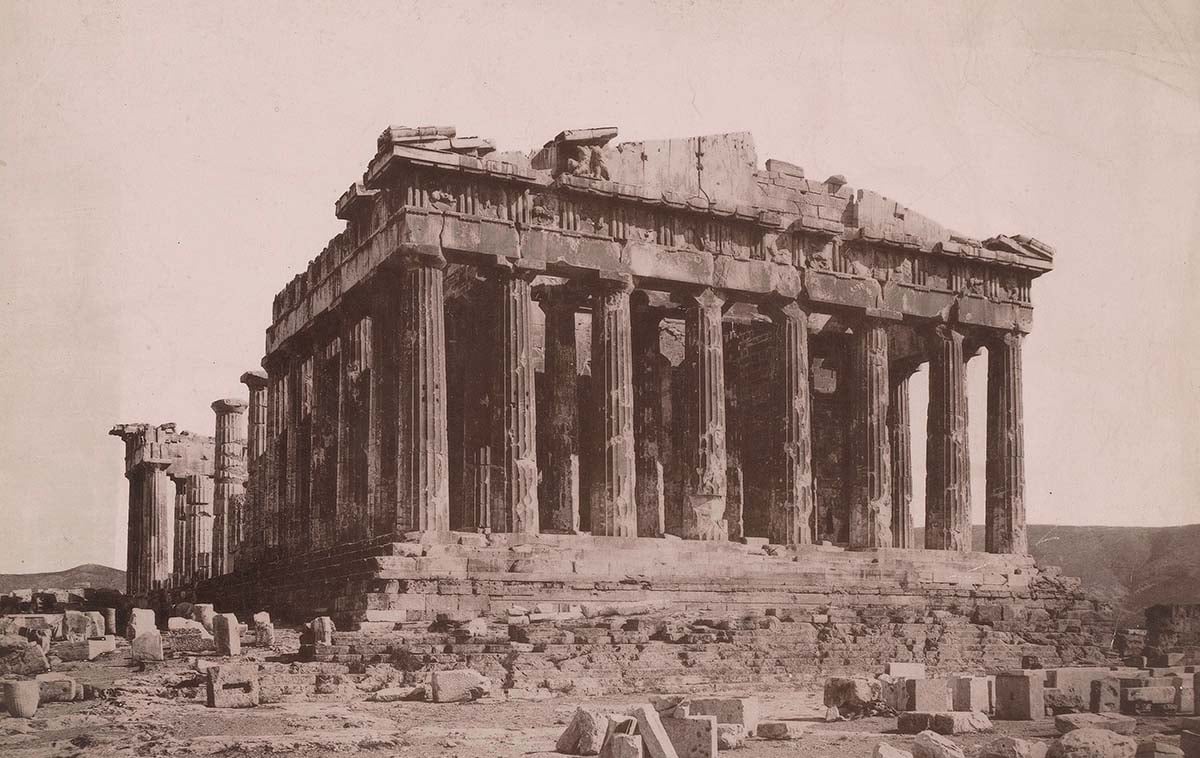
On September 26, 1687, the Parthenon of Acropolis in Athens faced a severe blow and was partly destroyed by Francesco Morosini, the leader of the Venetian army, who, as part of the Morean War, led an expedition to attack the Ottomans in Athens.
The fifteen-year “Great Turkish War,” an effort to oppose the expansion of the Ottoman Empire into Europe, was composed of smaller conflicts, including the Morean War, between Venice and the Ottomans. During the war, Captain-General Francesco Morosini was given orders to seize Athens and the Acropolis from the Turks.
Despite the earlier destruction of the Propylaea, the Ottoman Turks fortified the Acropolis and used the Parthenon as a gunpowder magazine, possibly in the belief that Morosini would respect the historical monument and wouldn’t attack.
However, on Friday, September 26, 1687 at 7 p.m., a Venetian mortar round, fired from Philopappos Hill, blew up the magazine. The explosion led to the detonation of the building’s central portion and caused the cella’s walls to crumble into rubble. Many of the columns also toppled, causing the architraves, triglyphs, and metopes to come tumbling down.
About three hundred people were killed in the explosion, which showered marble fragments over nearby Turkish defenders and sparked fires that destroyed many homes.
Subsequently, Morosini jumped at the chance to loot sculptures from the ruins, which resulted in even further damage. Sculptures of Poseidon and Athena’s horses fell to the ground and broke into pieces as Morosini’s soldiers tried to detach them from the building’s west pediment.
Parthenon of Acropolis could have been destroyed entirely
In 1688, the Venetians abandoned Athens to avoid a confrontation with a large force the Turks had assembled at Chalcis. At that time, the Venetians had considered blowing up the remains of the Parthenon along with the rest of the Acropolis to ensure that it would not be militarily utilized as fortification by the Turks, but that idea was luckily not pursued.
Once the Turks had recaptured the Acropolis, they used some of the rubble produced by this explosion to erect a smaller mosque within the shell of the ruined Parthenon. For the next century and a half, parts of the remaining structure were looted for building material and especially valuable objects.
The Parthenon of Acropolis in Athens
The Parthenon, one of the most iconic structures in the history of Western civilization, is a former temple on the Athenian Acropolis in Greece, which was dedicated to the goddess Athena during the fifth century BC.
It stands in splendor on Acropolis Hill as it has for 2,500 years. Experts believe that the ingenuity of the Parthenon’s construction has allowed it to miraculously survive the ravages of time, nature, and mankind.
The Greek statesman Pericles commissioned the Parthenon, which became the largest Doric-style temple of its day, to be designed by the famed Greek architects Ictinus and Callicrates and the sculptor Phidias.
For decades, engineers, architects, and scientists have wondered exactly how this ingenious structure has successfully stood the test of time to continue to tower majestically over the Greek capital.
This architectural and engineering wonder, with its height, width, and depth defining the very concept of perfect proportion, has kept its secrets for many centuries since its completion in the year 438 BC—that is, until engineers and architects recently revealed the Parthenon‘s design and construction secrets.
See all the latest news from Greece and the world at Greekreporter.com. Contact our newsroom to report an update or send your story, photos and videos. Follow GR on Google News and subscribe here to our daily email!



